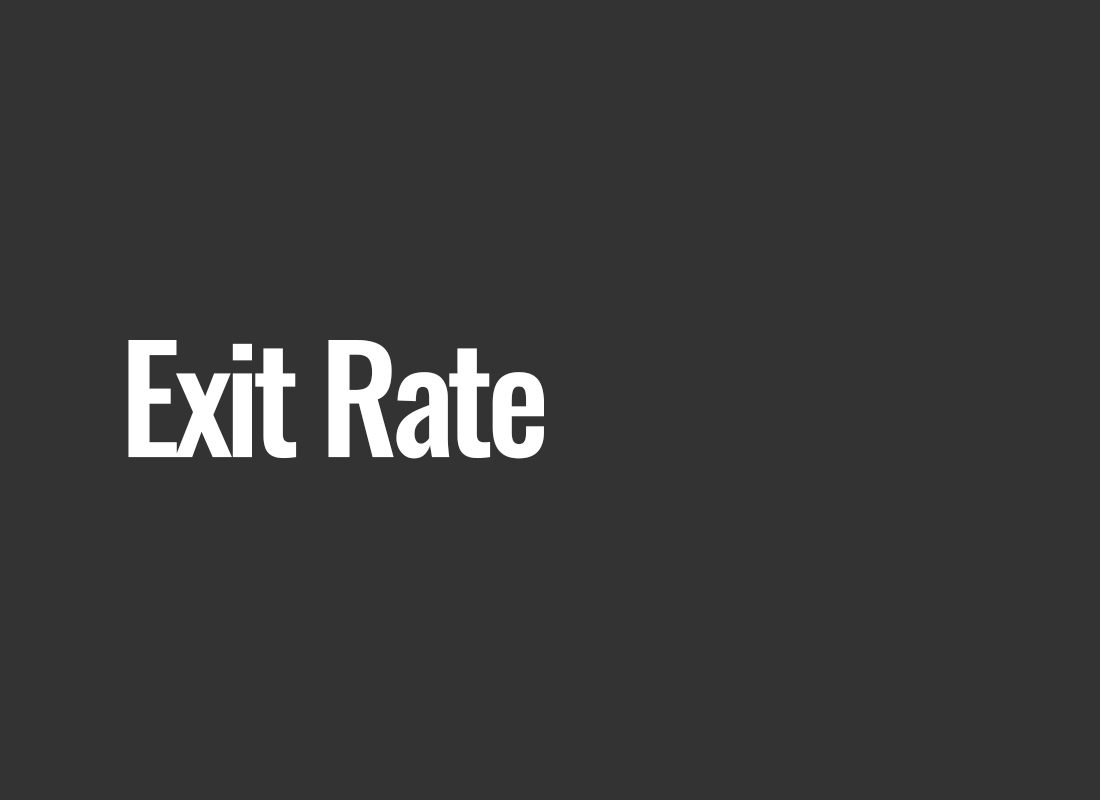Exit Rate
Exit Rate is a concept that holds significant importance in today's globalized and digital world. It appears to be one of the most crucial aspects worth examining in the context of UX (User Experience) strategies, e-commerce, marketing, and business in general. It is a metric that helps us understand what actions on our website or online store attract, and equally importantly, deter potential customers.
Exit Rate is not just a raw number; it is primarily a tool that allows us to better understand the behaviors of our users online. In the context of this metric, we learn where we are losing potential customers, what may require optimization, and what works to our advantage. Specific examples of Exit Rate applications will also be considered to demonstrate the practical benefits it can bring.
How does Exit Rate work?
To better understand how Exit Rate operates, we need to delve a bit deeper into its mechanism. This metric is calculated as the ratio of the number of sessions that ended on a specific page to the total number of sessions on that page. In other words, Exit Rate pertains to the percentage of users who left a particular website page after navigating through several subpages or performing specific actions, such as viewing products or reading articles.
It is important to note that Exit Rate differs from another popular metric known as Bounce Rate. Bounce Rate measures the percentage of users who leave a webpage immediately after entering it, without taking any action. Exit Rate, however, accounts for those users who may have gone through several subpages before leaving the website.
Why is understanding the difference between Exit Rate and Bounce Rate so important? Because Exit Rate allows us to pinpoint the specific pages where users decide to leave our website. This critical information aids in identifying weak points that may require optimization.
Imagine you run an online store and notice a high Exit Rate on the shopping cart page. This indicates that many people are leaving the store before completing a purchase. With Exit Rate data, you can discover that the problem may be related to high shipping costs, a complicated payment process, or a lack of available payment methods. Armed with this information, you can make informed decisions and implement changes to increase conversions and profits.
It's also worth remembering that Exit Rate can be analyzed at various levels of a website. You can identify Exit Rates for specific subpages, such as product pages, as well as for the entire site. This flexibility allows you to tailor the analysis to specific business needs and goals.
The operation of Exit Rate can be likened to a navigation tool that shows us where obstacles or traps are on the road. This knowledge enables us to plan better routes, avoid difficulties, and achieve our goals more quickly and efficiently. Exit Rate is key to optimizing a website, improving user experience, and enhancing the effectiveness of e-commerce and marketing efforts.
Examples of Exit Rate Applications
To better understand how Exit Rate can be useful in practice, let's explore a few specific examples from various fields, including e-commerce, UX, and marketing. This will help illustrate the significance of this metric and how its proper application can yield positive results.
1. E-commerce: Optimizing an Online Store
Online stores are one of the most obvious places where Exit Rate plays a crucial role. Suppose you run an online clothing store, and the Exit Rate on the product page is relatively high. An analysis of the Exit Rate may reveal that users are leaving the page after a few seconds, likely due to insufficient product information.
In response to this data, you can take actions such as adding more detailed product descriptions, better images, or customer reviews. These changes aim to increase customer confidence and encourage them to make a purchase, ultimately reducing the Exit Rate on the product page and increasing conversions.
2. UX: Enhancing User Experience
In the field of User Experience, Exit Rate is a key metric that helps understand where users lose interest in our website. Suppose you run an informational website, and the Exit Rate on the homepage is exceptionally high. Analysis may reveal that users are leaving the site after a few seconds because they cannot find content that interests them.
In response to this discovery, you can take actions like improving navigation, adding more visible links to key articles, or personalizing the homepage content based on user preferences. This can lead to a decrease in Exit Rate, longer time spent on the site, and increased engagement of readers.
3. Marketing: Evaluating Campaign Effectiveness
Exit Rate is also valuable in evaluating the effectiveness of marketing campaigns. Suppose you are running an advertising campaign that directs users to a landing page aimed at getting them to register on your platform. If the Exit Rate on that landing page is very high, it may indicate that users are not interested in the offer or the advertising message.
In such a situation, you can adjust the ad content or the landing page to better align with user needs and expectations. Analyzing Exit Rate helps quickly identify issues and take effective corrective actions.
Summary
Exit Rate is not just a statistic; it is a valuable indicator of where improvements can be made in our online activities. Regardless of the industry or project in which our company operates, analyzing Exit Rate allows us to better understand where we are losing users and what can capture their attention. This tool enables us to work more efficiently, optimize strategies, and increase the effectiveness of our actions. It is essential to continually monitor Exit Rate and use this information to achieve success in the dynamic online world.




